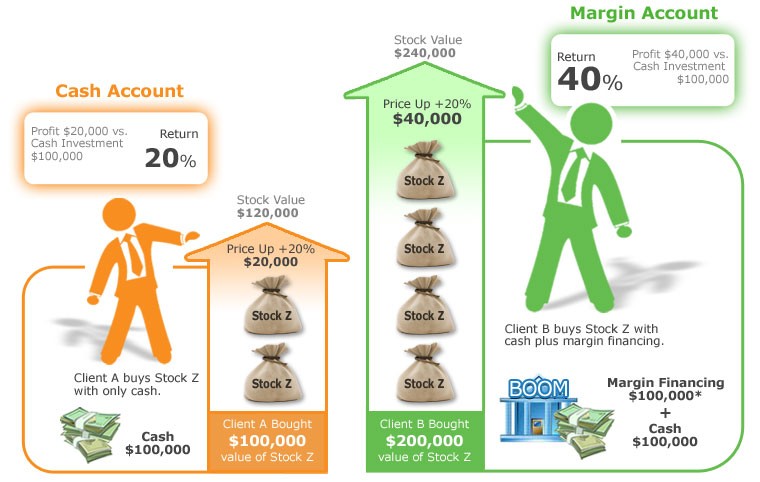Margin Trading What Is Buying On Margin
Post on: 5 Июль, 2015 No Comment

The Basics
Buying on margin is borrowing money from a broker to purchase stock. You can think of it as a loan from your brokerage. Margin trading allows you to buy more stock than you’d be able to normally. To trade on margin, you need a margin account. This is different from a regular cash account. in which you trade using the money in the account. By law, your broker is required to obtain your signature to open a margin account. The margin account may be part of your standard account opening agreement or may be a completely separate agreement. An initial investment of at least $2,000 is required for a margin account, though some brokerages require more. This deposit is known as the minimum margin. Once the account is opened and operational, you can borrow up to 50% of the purchase price of a stock. This portion of the purchase price that you deposit is known as the initial margin. It’s essential to know that you don’t have to margin all the way up to 50%. You can borrow less, say 10% or 25%. Be aware that some brokerages require you to deposit more than 50% of the purchase price.
You can keep your loan as long as you want, provided you fulfill your obligations. First, when you sell the stock in a margin account, the proceeds go to your broker against the repayment of the loan until it is fully paid. Second, there is also a restriction called the maintenance margin. which is the minimum account balance you must maintain before your broker will force you to deposit more funds or sell stock to pay down your loan. When this happens, it’s known as a margin call. We’ll talk about this in detail in the next section.
Borrowing money isn’t without its costs. Regrettably, marginable securities in the account are collateral. You’ll also have to pay the interest on your loan. The interest charges are applied to your account unless you decide to make payments. Over time, your debt level increases as interest charges accrue against you. As debt increases, the interest charges increase, and so on.
Therefore, buying on margin is mainly used for short-term investments. The longer you hold an investment, the greater the return that is needed to break even. If you hold an investment on margin for a long period of time, the odds that you will make a profit are stacked against you.
Not all stocks qualify to be bought on margin. The Federal Reserve Board regulates which stocks are marginable. As a rule of thumb, brokers will not allow customers to purchase penny stocks. over-the-counter Bulletin Board (OTCBB) securities or initial public offerings (IPOs) on margin because of the day-to-day risks involved with these types of stocks. Individual brokerages can also decide not to margin certain stocks, so check with them to see what restrictions exist on your margin account.
A Buying Power Example
Let’s say that you deposit $10,000 in your margin account. Because you put up 50% of the purchase price, this means you have $20,000 worth of buying power. Then, if you buy $5,000 worth of stock, you still have $15,000 in buying power remaining. You have enough cash to cover this transaction and haven’t tapped into your margin. You start borrowing the money only when you buy securities worth more than $10,000.
This brings us to an important point: the buying power of a margin account changes daily depending on the price movement of the marginable securities in the account. Later in the tutorial, we’ll go over what happens when securities rise or fall.














